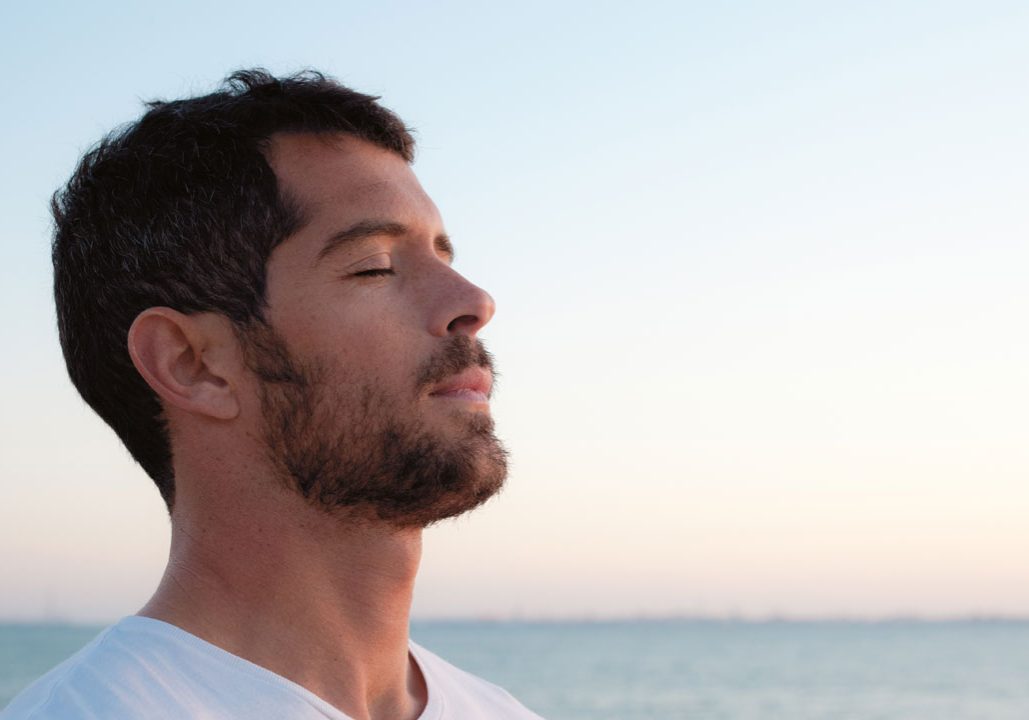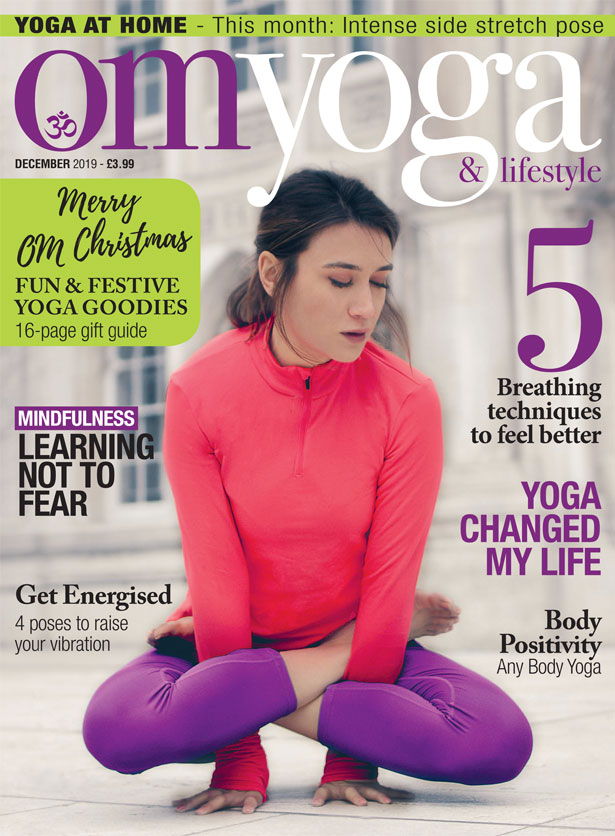
BREATHING TO FEEL BETTER
Garry Jones relates the importance of breathing on mental and emotional health and how we can help ourselves feel better
A key method for relieving feelings of depression and anxiety is centered around breath cycles. Literally all you will do is breathe. No other requirement. Do nothing!
Like yoga asana practice and meditation, breathing practices can have a powerful effect on how you feel, and in dealing with difficult emotional states like anxiety or depression.
The way you breathe is telling of what is occurring in your mind - and it requires attention, now. To help alleviate feelings of stress and worry, focusing on truly opening the capacity of your lungs can bring great rewards. Everything comes back to your breathing, it’s integral to life. Here are five steps so you can harness its true power.
1. Do you breathe the earth or does the earth breathe you?
The answer is not a metaphysical one (well, maybe!). The answer most definitely is an anatomical one. When you ‘expire’ - that is literally ‘a little death’, which is where the word originates from in meaning - you expel all of the air from your lungs. To do that, you create a vacuum in your lungs and the air pressure inside of you becomes lower than that outside of you. A simple law of physics follows and because the air outside (the Earth’s atmosphere) is now of higher pressure than that inside of your lungs, the air rushes in. You don’t so much ‘breathe in’ as ‘receive in’. This really is an important point. To live, you receive air by creating the space inside of you to let it in. The Earth breathes us. The first thing you do when you escape the comfort of your mother’s womb is breathe in. You ‘inspire’. You take in pure air or spirit. It is one of the most traumatic examples in our life where we are unable to breathe, temporarily. The last thing you do as you leave this world is breathe out.
Neither of these acts requires conscious control of what we are doing. Not a conscious decision. They just happen.
If you let go, as you do when you expire, you will then receive, the Earth breathing you. Focusing on breathing at capacity will directly increase the amount you can receive as you are creating space for new, more healthy, useful breaths. Letting go to receive can be applied to your thoughts, objects and people. Decluttering your lungs in this sense allows you to receive things that serve you well; the same goes for your mind, heart and home.
2. Breathe consciously to change your body/brain chemicals
The subconscious is normally in charge of your breathing; it responds to your feelings and emotions. Changing the ratio of breathing out to breathing in alters body/brain chemicals and in turn alters your thoughts, emotions and feelings.
You can gain control of your mood and emotions by altering body chemicals such as endorphins, dopamine, serotonin, and oxytocin - if you learn how. The most obvious example of this experience is when you exercise. Changing your breathing rates and balance of CO2 and oxygen will also change your brainwave patterns. I will refrain from going too deeply into this fascinating subject here, but it’s certainly something well worth exploring.
You remember the advice of counting to 10 when you got angry as a child; the better advice would have been to control your breathing. Generally, when you count to 10 you hold your breath! This gives your brain a chance to alter its chemical response and change your thoughts or feelings.

3. Do nothing
The meditation example I will discuss here is centered around breath cycles. Literally all you will do is breathe; no other requirement. Do nothing other than breathe consciously! Instead of ‘doing’ depression, or anxiety, or destructive and unwelcome behaviours, do absolutely nothing…just breathe. That’s it: just breathe. You may find this a great challenge, or you may not…you may find this easy. Just breathe.
4. You breathe between 12-20 breaths a minute
Athletes breathe more slowly yet have better respiratory function. When you slow down how many breaths a minute you are taking, you manage your CO2 and oxygen levels better, and also your emotions. You flood your brain with dopamine, serotonin, and endorphins. Your brainwaves will change as a consequence too, in a positive way. Changing your breathing speed will change your thoughts and subsequently your emotional state. In other words, your mental health.
5. The fourfold breath meditation
Pranayama, a term familiar to most yogis, is a set of breathing cycles that has been studied and practiced for thousands of years. Science is beginning to study – and accept – its effects, too. I’m sure there will come a day when science and mysticism blend as one to give proof of what works and what does not! This technique will help to calm both your mind and your body.
Simply count as you take a breath in. The time is four seconds. To be consistent, it helps to count like this: ‘1 and 2 and 3 and 4’ in your head. Sit or stand up straight. Head up. Look up to your right (this will release serotonin) and wiggle your toes as this will activate a neurological path from your childhood. Children wiggle their toes when learning at a high-performance rate. Place your tongue behind your teeth (this will reduce the chatter in your head) and take a deep breath in through your nose and out through your mouth with an ‘Ahhhhhh’.
Now, breathe in through the nose with a ‘1 and 2 and 3 and 4’. Hold your breath using the same ‘1 and 2 and 3 and 4’. Breathing out through the nose, ‘1 and 2 and 3 and 4’. Hold it to the same count, ‘1 and 2 and 3 and 4’. Keep repeating the cycles. Start with five minutes if you can and build up to 15 minutes as you get more accustomed to the practice.
It’s not as easy as it seems, especially over a longer period of time, but start with a few minutes and build up from there to get the benefits.
You may find you start feeling very hot, sweaty, or struggle to maintain a simple count. Stick with it. The benefits are worth it. Do, however, stop if you find yourself struggling to breathe. Breathing holds great power in altering our emotional state. Once you are efficiently breathing with ease, you can explore more of the world of breathing and the relationship it has to your emotional wellbeing.
Garry Jones is a transformational coach, martial arts master, international speaker and an author and co-author. His new book, A Life Without Fear, provides practical tools to take control and release feelings of fear, depression and anxiety. Visit: garryjonescoaching.com




